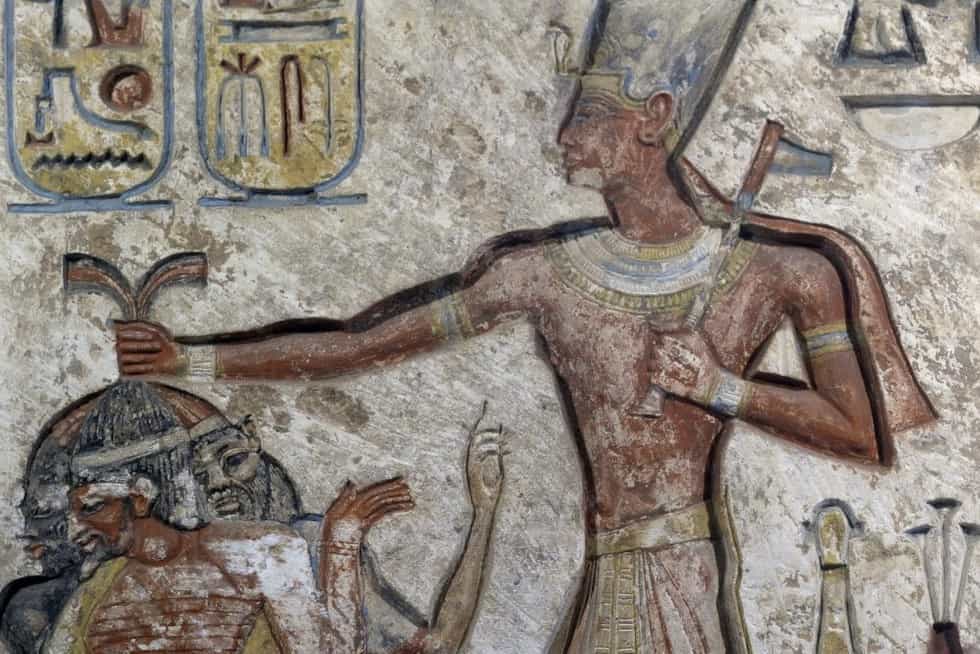The average height of a king remained a steady 166 cm (5.44 feet) and featured much fewer variations compared to the general population.
What was the height of the pharaohs and queens in Ancient Egypt?
The determination of their heights is not based solely on the measurement of their mummies but also on calculations deriving from the length of the tibia and femur, correlated with age at death.
Several factors determine the height, but consanguineous marriages seem to have the most important influence.
A general analysis of the data we have access to reveals that pharaohs were usually much taller than queens. The predominant hypothesis for this height difference is that shorter women were considered more attractive (Pawloski, Stulp).
There are no royal couples in which the queen is taller than the pharaoh.
An exceptionally tall queen, from the analysis of the remains, was Nefertari, who likely reached a height of 165 cm. (Bianucci et al., 2015). This made her a taller woman than the average man of her time, but Nefertari was married to one of the tallest pharaohs ever, Ramses II. Ramses II was 173 cm tall when he died at 90 and was certainly much taller in his youth.
Robins and Shute calculated the heights of some of the pharaohs and queens:
Seqenenre Tao II: 171 cm (5.6 feet)
Ahmose I: 164 cm (5.3)
Amenhotep I: 177 cm (5.8)
Thutmose II: 165 cm (5.4)
Thutmose III: 171 cm (5.6)
Amenhotep II: 170 cm (5.5)
Thutmose IV: 165 cm (5.4)
Amenhotep III: 160 cm (5.2)
Skeleton of the KV55 (Akhenaten?) 167–168 cm (5.4)
Tutankhamun: 169 cm (5.5)
Seti I: 171 cm (5.6)
Ramses II: 175 cm? Uncertain (5.7)
Merenpath: 171 cm (5.6)
Seti II: 168 cm (5.5)
Siptah: 167 cm (5.4)
Below are the heights of some of the queens:
Ahmose-Nefertari (sister-wife of Ahmose I): 161 cm (5.2)
Hatshepsut: 153 155 cm (5 feet)
Tiye (wife of Amenhotep III): 145.5 cm (4.7)
Younger Lady (Tut’s mother): 158 cm (5.1)







